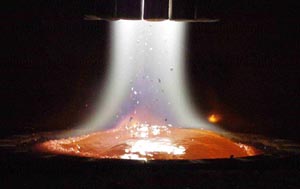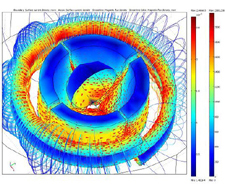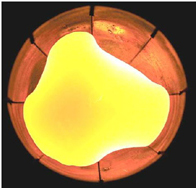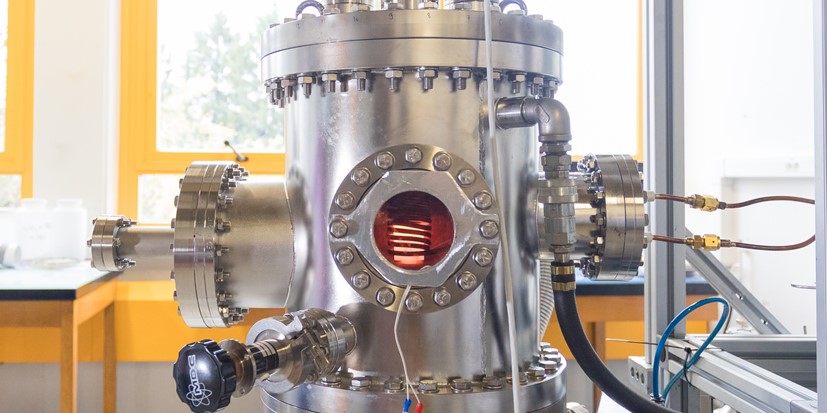Photovoltaic silicon
The purification process developed by the EPM group is recognised as a key element in preparing silicon material of photovoltaic quality. Since 2010, EPM has a branch at the INES (Institut National de l'Energie Solaire) in Chambéry and is associated with the TEneRDIS national competitive cluster supported by the CEA-G and local authorities via the Rhône-Alpes Region Energies Cluster.

INDUCTIVE PROCESSES / THERMAL PLASMAS / Application: Metallurgical Silicon Refining for Solar Cells / In this process : Plasma produces reactive species (radicals and ions), electromagnetic stirring of liquid silicon renews the interface, leading to a reactive volatilisation of specific impurities (B, C, O...) at the surface
Microwave plasmas and circuit-breaker arcs
Radiative heat transfers inside plasma and outwards are assessed. The problem leads in coupling effective electromagnetic formulations and thermohydraulics with chemical kinetics in thermal plasmas (in collaboration with Schneider Electric).
Induction
- producing MMC for the aviation industry (Snecma, Bimetal)
- continuously galvanisation of steel sheets (Siemens, Arcelor)
- eliminating instabilities (in particular rotation) of electromagnetically levitated liquid loads) (Corus)
The cold-crucible process is used successfully for:
- producing titanium dental prostheses by cold crucible melting and centrifugal casting (Tecus)
- producing and purifying photovoltaic silicon (Photowatt and Invensil).
 3D numerical modeling of a electromagnetic levitation using cold crucible Note : the path of the induced electrical current (red arrows). The optimization of this path is a condition to improve the efficiency of the process. |  Electromagnetic levitation of a load of Titanium - Note the instabilities of the free surface (coll. SNECMA,CORUS) |
Use of levitation cold crucible to elaborate metallic material
This process is able to melt and elaborate higth melting point materials as refractory materials of industrial issues. However, many surface instabilities occur when the magnetic field (AC) increases. This phenomena had been elucidated recently.


